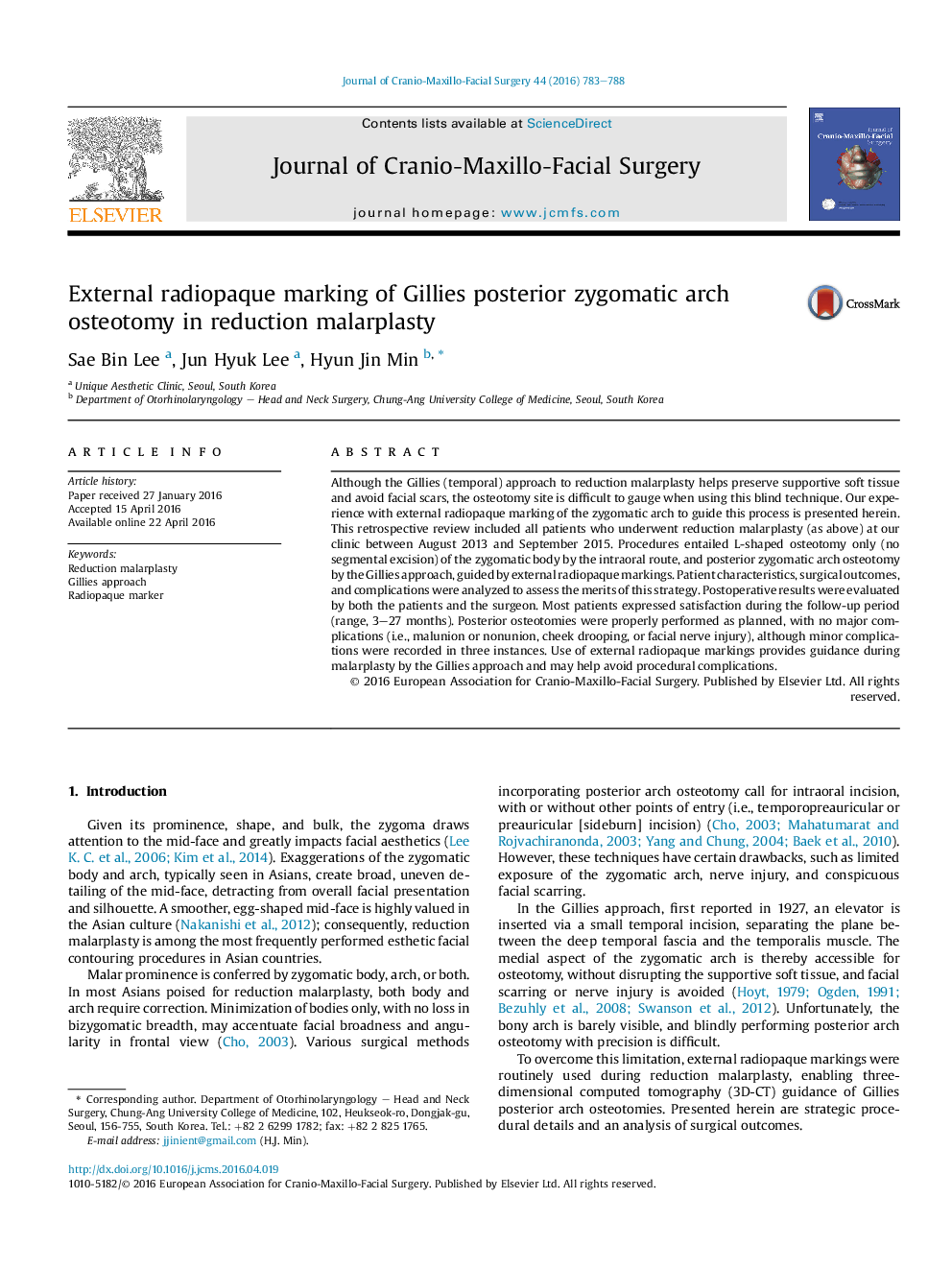| کد مقاله | کد نشریه | سال انتشار | مقاله انگلیسی | نسخه تمام متن |
|---|---|---|---|---|
| 3142247 | 1196779 | 2016 | 6 صفحه PDF | دانلود رایگان |
Although the Gillies (temporal) approach to reduction malarplasty helps preserve supportive soft tissue and avoid facial scars, the osteotomy site is difficult to gauge when using this blind technique. Our experience with external radiopaque marking of the zygomatic arch to guide this process is presented herein. This retrospective review included all patients who underwent reduction malarplasty (as above) at our clinic between August 2013 and September 2015. Procedures entailed L-shaped osteotomy only (no segmental excision) of the zygomatic body by the intraoral route, and posterior zygomatic arch osteotomy by the Gillies approach, guided by external radiopaque markings. Patient characteristics, surgical outcomes, and complications were analyzed to assess the merits of this strategy. Postoperative results were evaluated by both the patients and the surgeon. Most patients expressed satisfaction during the follow-up period (range, 3–27 months). Posterior osteotomies were properly performed as planned, with no major complications (i.e., malunion or nonunion, cheek drooping, or facial nerve injury), although minor complications were recorded in three instances. Use of external radiopaque markings provides guidance during malarplasty by the Gillies approach and may help avoid procedural complications.
Journal: Journal of Cranio-Maxillofacial Surgery - Volume 44, Issue 7, July 2016, Pages 783–788
